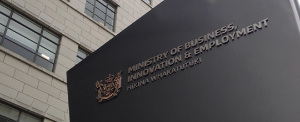
When the Financial Services Legislation Amendment Bill takes effect, all financial advisers will have to work for a financial advice provider (FAP).
They can choose whether to take their own licence for their business or to work under the umbrella of another.
MBIE said in its recent discussion document on licensing fees that there was still uncertainty about the numbers that would apply for a licence.
"While we know how many AFAs, QFEs and RFAs there are, there is uncertainty about how current market participants will choose to operate in the new regime. It is unclear how many individuals may choose to apply for a licence as a single adviser business, or operate under a licensed firm. Similarly, it is unclear how many current AFAs and RFAs may choose to operate as financial advisers or nominated representative."
But it said the Financial Markets Authority (FMA) had undertaken work to assess the make-up of the market and estimate how it would arrange itself.
MBIE had based its own work on the FMA assumption that all current QFEs would become a FAP, with nominated representatives and financial advisers under its wing.
It also assumed that the majority of non-QFEs that engaged more than one RFA would apply to become a FAP.
That would leave the 21% of AFAs in sole practice and a similar proportion of RFAs to become sole-adviser FAPs.
“Taking into account the assumptions above, the FMA estimates that there will be between 1250 and 3240 applicants for a financial advice provider licence,” MBIE said.
Using the mid-point of that range, MBIE said it would mean 57 financial advice providers with financial advisers and nominated representatives working for them, 450 FAPs with multiple financial advisers and 1733 single-adviser firms.
The FMA has previously said it was bracing for a chunk of work when the licensing regime began but it was not clear exactly how big that would be.
In August, head of regulation Liam Mason said the FMA did not have a good picture of the current market of financial advisers who were not authorised. Most advisers still did not have a regulatory relationship with the FMA, he said, so it was hard to estimate what sort of numbers of financial advice providers would seek a licence under the regime.
“It’s going to be a major piece of work for us – licensing more firms than we ever have before.”
| « Bank AFA force broadly steady | Mann on a mission to diversify financial advice » |
Special Offers
Sign In to add your comment

© Copyright 1997-2025 Tarawera Publishing Ltd. All Rights Reserved
The education piece isn’t insurmountable. What’s going to drive exits is the value of individual advisers to the FAP.
How many RFA’s doing little new business are going to become FAP’s?
They don’t represent commercial value to FAP’s as FA’s and they can’t become NR’s and retain client ownership.
There’s a significant portion of the adviser industry doing less than minimum wage with new business volumes, and they don’t represent commercial reality for the FAP on cost or return, and nor do they for responsibility of the advice.
Which leaves them to work through licensing as a FAP themselves, the question that follows is are they going to be able to license?
I suspect we will see quite a number hang up the pen, not because of the feared impact of education we have heard, but because they can’t pass the bar required for licensing.
That’s full licensing, not transitional licensing.